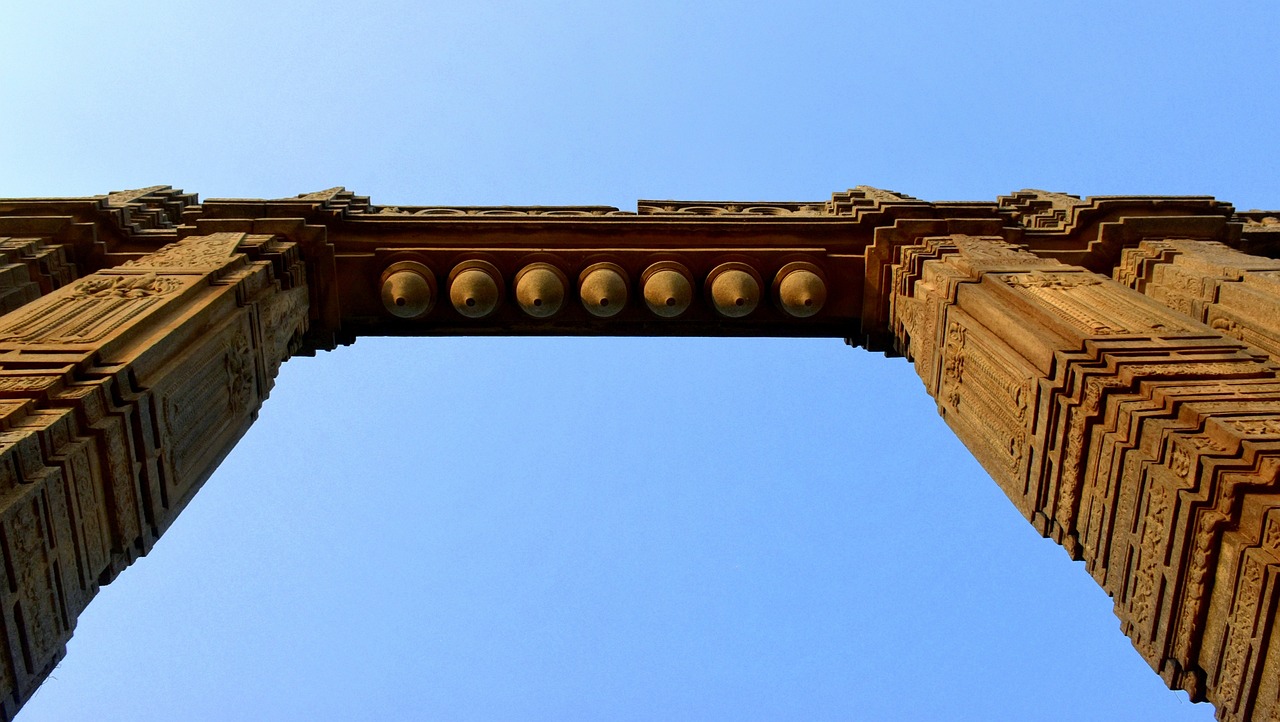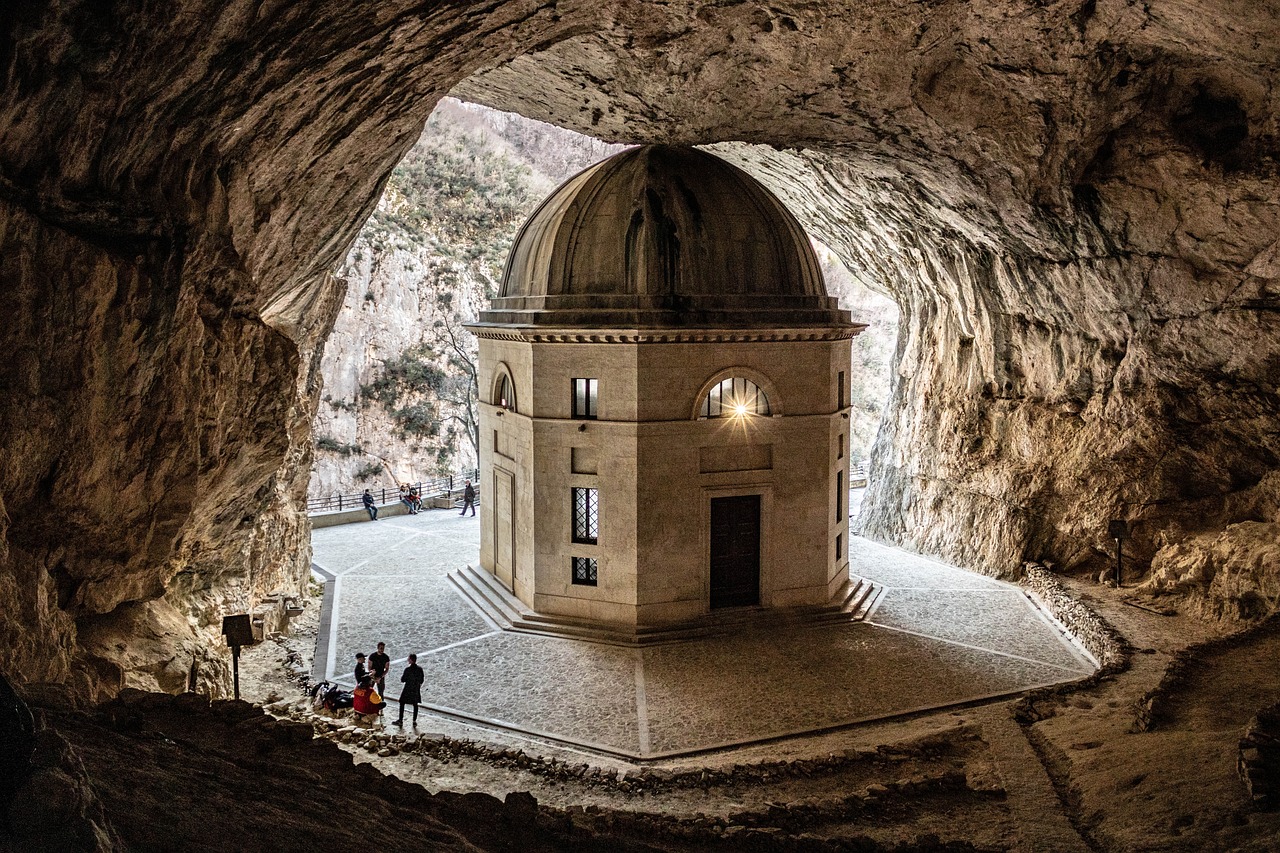The Cultural Exchange Between Ancient Religions
The cultural exchange between ancient religions is a fascinating journey through time, revealing the interconnectedness and mutual influences that shaped the beliefs and practices of civilizations. As ancient societies interacted through trade routes, a rich tapestry of religious syncretism emerged, blending diverse traditions and fostering a shared heritage of spiritual wisdom.
Trade routes served as conduits for the spread of beliefs, rituals, and artifacts, creating opportunities for cultural exchange and dialogue among different civilizations. The Silk Road, for example, not only facilitated the trade of goods but also enabled the transmission of religious ideas between East and West, leading to the enrichment and diversification of religious practices.
Art and architecture played a significant role in shaping the visual language of ancient religions, reflecting the influences and exchanges that occurred between diverse cultures. From the intricate carvings of Hindu temples to the majestic domes of Islamic mosques, architectural styles evolved through cross-cultural interactions, blending elements of symbolism and aesthetics.
Language served as a bridge for the transmission of religious texts and teachings across ancient societies, fostering a deeper understanding of spiritual concepts and beliefs. The translation of sacred texts such as the Bible, the Quran, and the Vedas into different languages allowed for the dissemination of religious knowledge and the adaptation of theological ideas to local contexts.
Rituals and ceremonies underwent adaptations and transformations as ancient religions encountered new cultural practices, leading to the evolution of religious traditions and the emergence of syncretic forms of worship. The incorporation of elements from diverse belief systems enriched the spiritual experiences of believers and contributed to the diversity of religious expression.
Philosophical and spiritual syncretism emerged as a result of the exchange of ideas and beliefs between ancient religions, giving rise to new schools of thought and religious doctrines that reflected a fusion of diverse perspectives. The blending of philosophical concepts from Greek, Indian, and Chinese traditions shaped the intellectual landscape of ancient societies and influenced the development of religious philosophies.
Symbolism and mythological connections played a crucial role in connecting ancient religions through shared narratives and archetypal motifs. The symbolism of the lotus in Hinduism, Buddhism, and Egyptian mythology, for instance, symbolizes purity and rebirth, illustrating the universal themes that transcended cultural boundaries and enriched the collective imagination of ancient civilizations.
The impact of ancient trade routes on the transmission and dissemination of religious beliefs highlights the interconnected nature of human societies and the role of commerce in fostering cultural exchanges. As goods and ideas traveled along the Silk Road and the Mediterranean Sea, a vibrant tapestry of religious diversity and syncretism emerged, shaping the spiritual landscape of ancient civilizations.
In conclusion, the cultural exchange between ancient religions reveals the intricate web of connections and influences that shaped the spiritual heritage of humanity. Through trade routes, art, language, rituals, philosophy, and symbolism, ancient civilizations engaged in a dynamic dialogue that transcended geographical boundaries and enriched the tapestry of human experience.

Trade Routes and Spread of Beliefs
Exploring how ancient trade routes facilitated the exchange of religious beliefs, practices, and artifacts among civilizations, leading to cultural syncretism and mutual influences.
Ancient trade routes served as conduits for not only goods but also ideas and beliefs, allowing diverse cultures to interact and share their religious practices. The Silk Road, for instance, was not just a path for merchants to trade silk and spices but also a highway for the transmission of philosophical concepts and spiritual ideologies. As caravans traversed vast distances, they carried with them not only commodities but also the seeds of religious doctrines that would take root in foreign lands.
Through these trade routes, religions such as Buddhism, Christianity, Islam, and Hinduism spread far beyond their places of origin, mingling with local belief systems and giving rise to syncretic forms of worship. The exchange of beliefs along these ancient highways was akin to a grand marketplace of ideas, where spiritual currencies were bartered and exchanged, enriching the tapestry of human spirituality.
Moreover, the interconnectedness fostered by trade routes allowed for the blending of rituals and ceremonies, resulting in a mosaic of practices that reflected the diverse influences of different cultures. The spread of beliefs was not a one-way street but a dynamic process of give and take, where each civilization contributed to the evolving landscape of religious expression.
As trade routes crisscrossed continents, beliefs traveled along with the merchants, transcending geographical boundaries and transcending linguistic barriers. The dissemination of religious ideas was not merely a byproduct of commerce but a deliberate exchange that shaped the spiritual landscape of ancient civilizations.

Art and Architecture Influence
When delving into the realm of ancient religions, one cannot ignore the profound impact that art and architecture had on shaping belief systems and cultural practices. The exchange of artistic styles and architectural techniques among civilizations played a pivotal role in the development and evolution of religious expressions.
Imagine the intricate carvings of Egyptian hieroglyphs influencing the symbolic language of Mesopotamian temples, or the majestic columns of Greek temples inspiring the grandeur of Roman religious structures. These cross-cultural influences not only enriched the visual landscape of ancient religions but also symbolized a harmonious fusion of artistic creativity.
Moreover, the architectural marvels such as the magnificent pyramids of Giza or the intricate temples of Angkor Wat stand as testaments to the ingenuity and spiritual devotion of ancient civilizations. The intricate designs, sacred geometries, and elaborate sculptures embedded in these structures served as conduits for spiritual transcendence and communal worship.
Artistic representations of deities, mythological narratives, and religious rituals adorned the walls of temples, caves, and palaces, illustrating a shared reverence for the divine and a collective quest for spiritual enlightenment. The exchange of artistic motifs and stylistic elements not only reflected cultural exchanges but also fostered a sense of interconnectedness and mutual inspiration among diverse religious traditions.
From the intricate frescoes of Buddhist caves in Ajanta to the elaborate mosaics of Byzantine churches, the artistic legacy of ancient religions transcends time and geography, embodying the universal language of creativity and spirituality. The architectural marvels and artistic masterpieces born out of cultural exchanges continue to inspire awe and wonder, inviting us to ponder the profound connections between art, architecture, and religious beliefs.

Language and Textual Borrowings
When delving into the intricate web of ancient religions, one cannot overlook the profound impact of language and textual borrowings on the evolution of belief systems. Across civilizations, the exchange of linguistic elements and sacred texts played a pivotal role in shaping religious practices and doctrines.
Imagine the ancient scribes meticulously translating sacred scriptures from one language to another, striving to capture the essence of divine wisdom in a new cultural context. These textual borrowings were not mere linguistic exercises but profound acts of cultural exchange, where the nuances of faith intertwined with the intricacies of language.
Through these translations and adaptations, ancient religions transcended geographical boundaries, finding resonance in distant lands where different tongues prevailed. The words of wisdom, once confined to a specific community, now echoed across diverse cultures, fostering a tapestry of shared beliefs and spiritual insights.
Moreover, the textual borrowings between ancient religions were not limited to literal translations but often involved reinterpretations and adaptations to suit the cultural sensibilities of the receiving civilization. This process of linguistic assimilation led to the enrichment of religious narratives, as stories of gods and heroes found new expressions in foreign tongues.
As sacred texts traversed the ancient trade routes, they carried not only words but also the essence of spiritual wisdom, transcending linguistic barriers to forge connections between disparate belief systems. The textual borrowings served as bridges between cultures, enabling the exchange of ideas and philosophies that laid the foundation for a rich tapestry of religious syncretism.

Rituals and Ceremonies Adaptation
Throughout history, the interaction between different ancient civilizations has played a crucial role in shaping the cultural landscape of the world. The exchange of religious beliefs, practices, and rituals among these civilizations has led to a fascinating phenomenon known as cultural syncretism. This article delves into the various aspects of this cultural exchange, exploring how ancient religions influenced each other in a myriad of ways.
One of the most intriguing aspects of the cultural exchange between ancient religions is the adaptation and incorporation of rituals and ceremonies from diverse cultures. Imagine a tapestry woven from threads of different colors and textures, each representing a unique cultural practice. As civilizations interacted and traded along the bustling routes of the ancient world, they exchanged not only goods but also spiritual traditions. The blending of rituals and ceremonies from various belief systems gave rise to new practices that reflected the fusion of different cultural identities.
For example, the ancient Egyptians, known for their elaborate burial rituals and ceremonies, incorporated elements of Nubian and Assyrian funerary practices into their own traditions. This exchange of funerary rites not only enriched the Egyptian belief system but also created a shared cultural heritage among neighboring civilizations. Similarly, the Greeks, renowned for their pantheon of gods and goddesses, adopted and adapted deities from Egyptian and Mesopotamian mythologies, leading to a syncretism of religious beliefs and practices.
As civilizations interacted and traded along the bustling routes of the ancient world, they exchanged not only goods but also spiritual traditions. The blending of rituals and ceremonies from various belief systems gave rise to new practices that reflected the fusion of different cultural identities.
Moreover, the adaptation of rituals and ceremonies was not merely a superficial borrowing of customs but a profound transformation that reshaped the religious landscape of ancient civilizations. The incorporation of foreign rituals often symbolized a deeper connection between cultures, fostering mutual understanding and respect among diverse communities. Through the adaptation of rituals and ceremonies, ancient religions transcended geographical boundaries and forged a shared spiritual heritage that continues to resonate in the present day.

Philosophical and Spiritual Syncretism
Philosophical and spiritual syncretism in ancient religions was akin to a vibrant tapestry woven from threads of diverse beliefs and ideologies. Imagine a marketplace of ideas where philosophers and spiritual leaders engaged in a lively exchange, blending concepts and principles to create a harmonious fusion of thought. This syncretism was not merely a superficial mixing of doctrines but a profound integration that gave rise to new religious doctrines and worldviews.
Through dialogues and debates, ancient scholars sought common ground between disparate belief systems, seeking to reconcile seemingly contradictory notions. The synthesis of Eastern and Western philosophies, for instance, resulted in the emergence of hybrid schools of thought that transcended cultural boundaries. This cross-pollination of ideas enriched the intellectual landscape, fostering a deeper understanding of the human experience and the cosmos.
Moreover, spiritual syncretism extended beyond theoretical discussions to practical applications in religious practices. Rituals and ceremonies borrowed from different traditions were melded together, creating syncretic forms of worship that reflected the shared values and aspirations of diverse communities. The blending of rituals not only unified disparate groups but also paved the way for a more inclusive and tolerant society.
Symbolism played a crucial role in the process of syncretism, as ancient cultures imbued common motifs with layered meanings that transcended individual belief systems. Mythological narratives were retold and reinterpreted, weaving together diverse cultural elements into a cohesive tapestry of shared stories and symbols. This symbolic language served as a bridge between different religious traditions, fostering mutual understanding and respect.
In essence, philosophical and spiritual syncretism in ancient religions was a testament to the human capacity for creativity and adaptability. It exemplified the transformative power of cultural exchange, where ideas flowed freely across borders, enriching and transforming the spiritual landscape of ancient civilizations. Through syncretism, ancient societies embraced diversity and unity, forging a tapestry of beliefs that continues to inspire and resonate with modern-day seekers of truth and meaning.

Symbolism and Mythological Connections
Symbolism and mythological connections play a crucial role in understanding the intricate web of cultural exchange between ancient religions. Imagine these symbols as threads weaving through different belief systems, connecting them in ways that transcend time and geography. It's like finding hidden messages in a tapestry, each symbol telling a story that resonates across civilizations.
Through these shared symbols, ancient religions communicated profound ideas and concepts, often transcending language barriers. Symbols like the serpent, representing wisdom and renewal, or the sun, symbolizing power and divinity, appeared in various mythologies, transcending cultural boundaries and carrying universal meanings.
Mythological connections further solidified the interwoven nature of ancient religions. Stories of creation, heroic deeds, and divine intervention echoed across different cultures, showcasing the universal themes that bind humanity together. Whether it's the flood myths or the tales of gods and goddesses, these narratives transcended individual beliefs, creating a tapestry of shared experiences.
Moreover, the interpretation of these symbols and myths evolved through cultural exchanges, leading to the enrichment and transformation of religious beliefs. As ideas traveled along trade routes, they encountered new perspectives and interpretations, giving rise to hybrid mythologies and syncretic symbolism that reflected the interconnected nature of ancient civilizations.
By delving into the symbolism and mythological connections of ancient religions, we unravel the intricate layers of cultural exchange that shaped the spiritual landscapes of the past. Each symbol, each myth, carries within it the echoes of distant voices and the whispers of shared beliefs, inviting us to explore the rich tapestry of human spirituality.

Trade Routes and Spread of Beliefs
Trade routes in ancient times played a pivotal role in the spread of religious beliefs across different civilizations. Imagine a bustling marketplace where not only goods but also ideas and spiritual practices were exchanged freely. The Silk Road, for instance, served as a conduit for the transmission of diverse religious beliefs, fostering a melting pot of cultures and faiths. Through these trade routes, ancient societies interacted, leading to a rich tapestry of syncretism where beliefs intertwined and influenced each other.

Art and Architecture Influence
When exploring the in the exchange between ancient religions, we delve into a world where creativity and spirituality intertwine. The art and architecture of ancient civilizations were not merely expressions of aesthetic beauty but also reflections of their religious beliefs and cultural values. Through intricate carvings, majestic temples, and awe-inspiring sculptures, these ancient societies conveyed their devotion to the divine and their reverence for the sacred.
One remarkable aspect of the art and architecture influence is the cross-pollination of styles and motifs between different ancient religions. For example, the architectural designs of Greek temples influenced the construction of Roman temples, showcasing a blend of Greek and Roman artistic elements. Similarly, the intricate patterns and geometric designs found in Islamic art were influenced by earlier Byzantine and Persian artistic traditions, demonstrating a fusion of diverse cultural influences.
Moreover, the symbolism embedded in the art and architecture of ancient religions served as a visual language that conveyed profound spiritual truths and mythological narratives. From the intricate frescoes of Buddhist caves to the elaborate mosaics of Christian basilicas, these artistic creations were not merely decorative but also served as tools for spiritual contemplation and religious instruction.
Furthermore, the architectural marvels of ancient civilizations, such as the pyramids of Egypt, the temples of Angkor Wat, and the Parthenon in Athens, stand as enduring testaments to the ingenuity and devotion of their creators. These monumental structures not only served as places of worship but also as symbols of power, prestige, and cultural identity, embodying the spiritual aspirations and artistic achievements of their respective societies.
In conclusion, the art and architecture influence in the exchange between ancient religions exemplifies the profound impact of cultural interactions on artistic expression and religious practice. Through the fusion of styles, motifs, and symbolism, ancient civilizations created a rich tapestry of artistic heritage that continues to inspire and captivate us today.

Language and Textual Borrowings
Language and textual borrowings played a significant role in the interconnection of ancient religions, fostering a rich tapestry of cultural exchange. Through the translation and adaptation of sacred texts across different civilizations, diverse religious traditions intertwined, giving rise to new interpretations and syncretic beliefs. The exchange of linguistic elements not only facilitated communication but also deepened the understanding of spiritual concepts and philosophies.
One fascinating aspect of language exchange in ancient religions was the assimilation of terminology and concepts from one belief system to another. This cross-pollination of vocabulary and ideas led to the enrichment of religious discourse and the emergence of hybrid religious practices. Sacred texts were not only translated but also reinterpreted to resonate with the cultural and linguistic nuances of the receiving civilization, creating a harmonious blend of diverse spiritual traditions.
Moreover, the textual borrowings between ancient religions transcended mere linguistic translation, delving into the realm of symbolic interpretations and allegorical meanings. As religious texts were passed down through generations and across borders, they underwent transformations that reflected the evolving spiritual landscape of interconnected societies. The adaptation of textual narratives and mythologies contributed to the formation of shared mythological frameworks and symbolic representations that transcended cultural boundaries.
Ultimately, the language and textual borrowings between ancient religions served as bridges that connected disparate belief systems, fostering a cross-fertilization of ideas and beliefs. Through the exchange of linguistic elements and sacred texts, ancient civilizations engaged in a profound dialogue that transcended linguistic barriers and cultural divides, shaping the spiritual heritage of humanity in ways that continue to resonate to this day.
Frequently Asked Questions
- What are some examples of cultural exchange between ancient religions?
Some examples of cultural exchange between ancient religions include the sharing of artistic styles, architectural techniques, philosophical ideas, and mythological motifs. These exchanges often occurred through trade routes, language translations, and the adaptation of rituals and ceremonies.
- How did trade routes contribute to the spread of religious beliefs?
Ancient trade routes played a crucial role in the dissemination of religious beliefs by facilitating the movement of people, goods, and ideas across vast regions. As merchants traveled along these routes, they carried not only commodities but also religious beliefs, leading to the exchange and diffusion of diverse spiritual practices.
- What is syncretism in the context of ancient religions?
Syncretism refers to the blending or fusion of different religious beliefs and practices to create new, hybrid forms of spirituality. In the context of ancient religions, syncretism often resulted from cultural interactions and exchanges, where elements of one religious tradition were integrated into another, giving rise to unique syncretic beliefs.



















